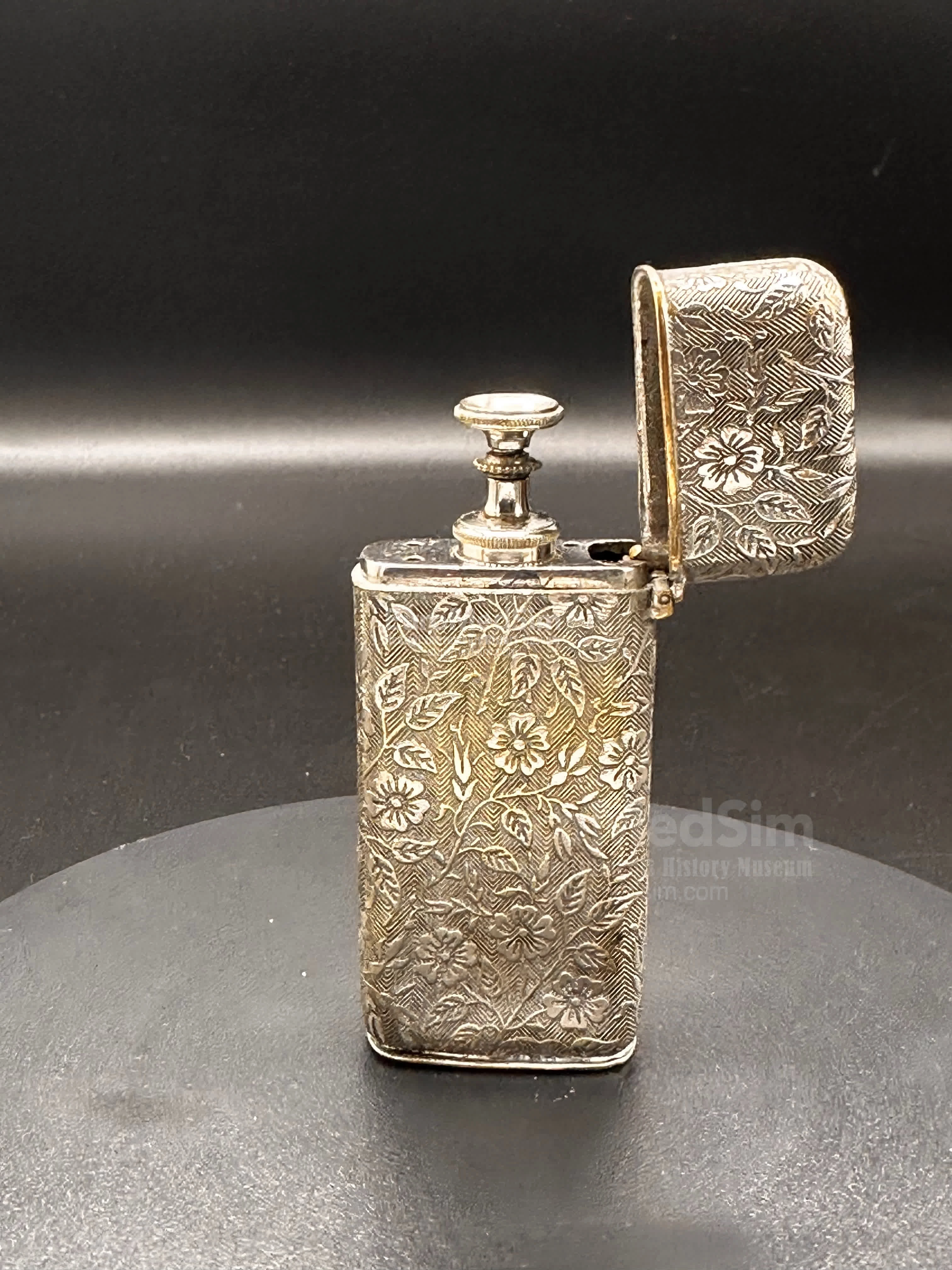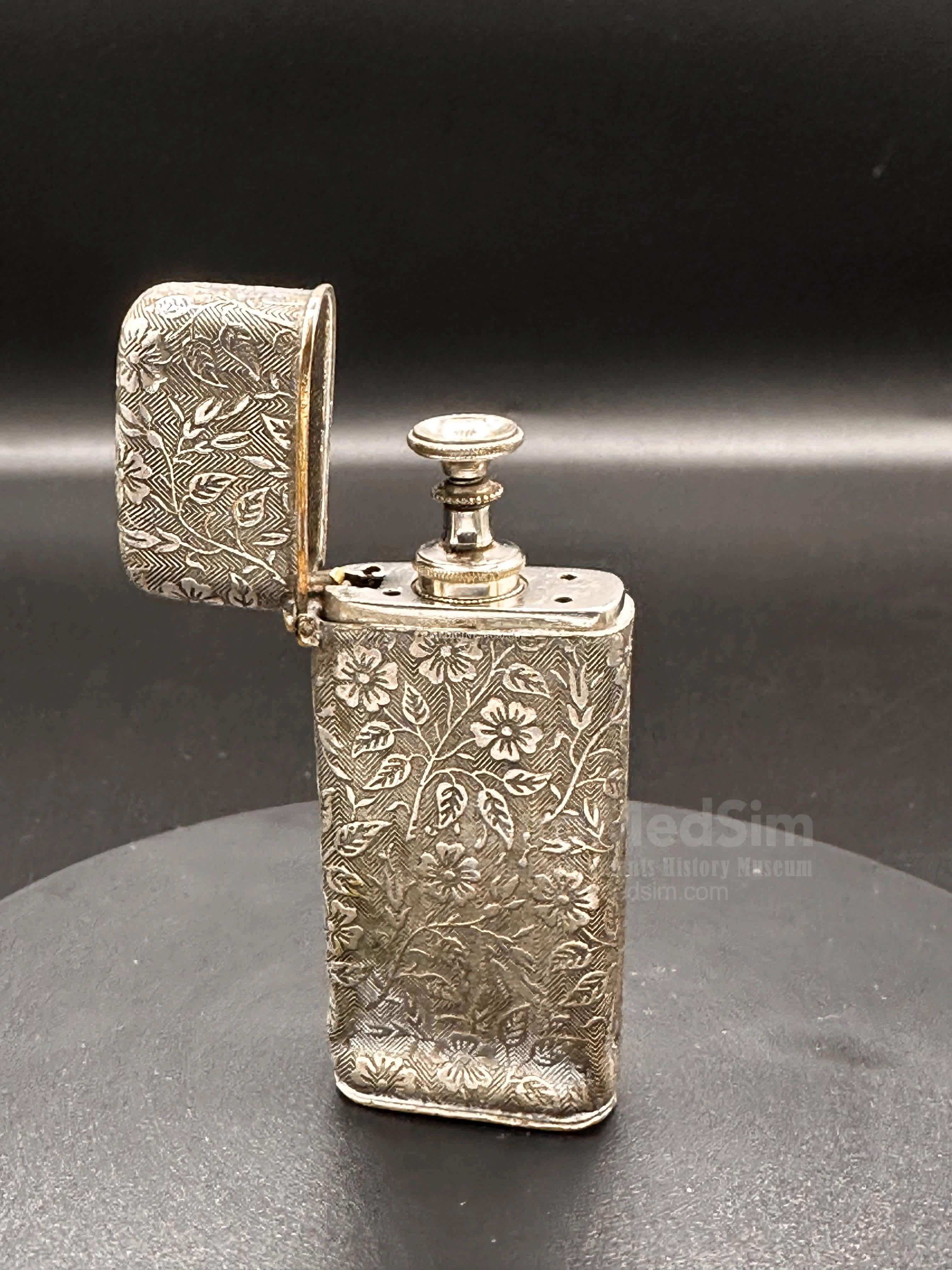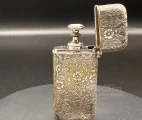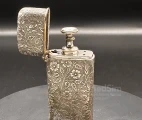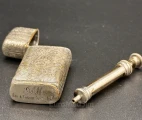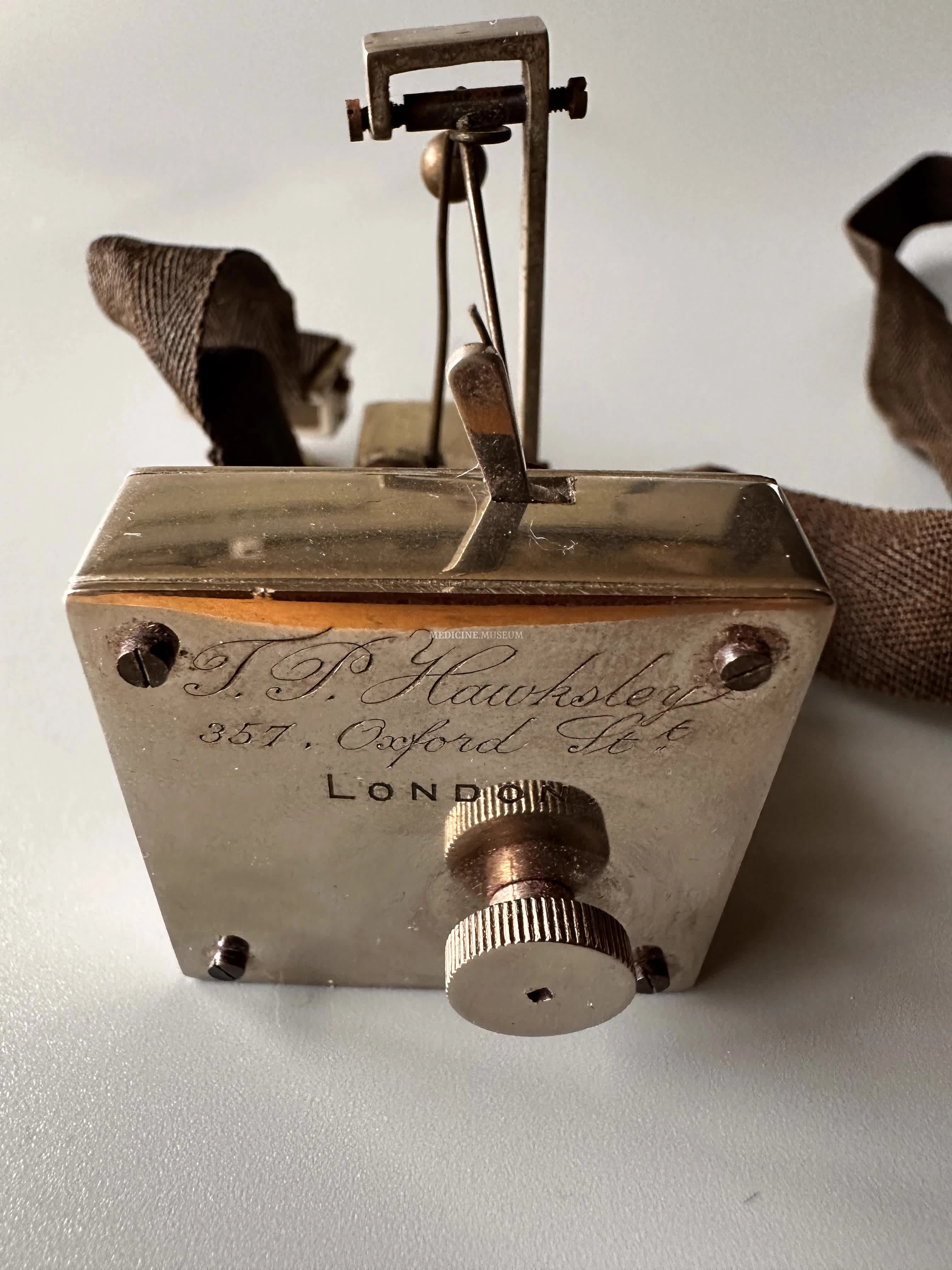Hypodermal syringe in floral ornamented German silver case
Object description
The syringe is presented in a silver-like metal box with rich floral ornamentation. As the hallmark is missing, the silver-like box may be made of "German silver" alloy (see note below). The item was probably a graduation gift for an ENT class - engraved on the bottom is "T.A.M. Ear & Throat Class. 1901", where T.A.M. may stand for Texas A&M University, TAMU (see note below). The lid of the box closed with a latch. The box had a compartment for the syringe and holes to hold needles and mandrains for cleaning their inner lumen (not presented). The Pravaz system detachable syringe, with a glass barrel and a serrated mechanism to ensure accurate dosing of small amounts of medication. The Pravaz syringe was a pioneering device for its time, laying the groundwork for modern hypodermic syringes, which are essential for medical treatments and vaccinations today - see note below.
Condition report
One wall of the case is slightly concave inwards, otherwise in good condition. Contains a syringe. Needles and madrains are missing. Dimensions: 73x14x30 mm (HxLxW), weight: 64 g.
Provenance
Property from an important North American collection of surgical and dental instruments – Collection of Dr. Bruce Logan, Medford, OR, USA. Acquired from the above in 2023.
Reference objects
A suitable reference object may be an item from the Science Museum Collection, London, UK: Hypodermic syringe, steel and glass, in silver case, A85212/1.
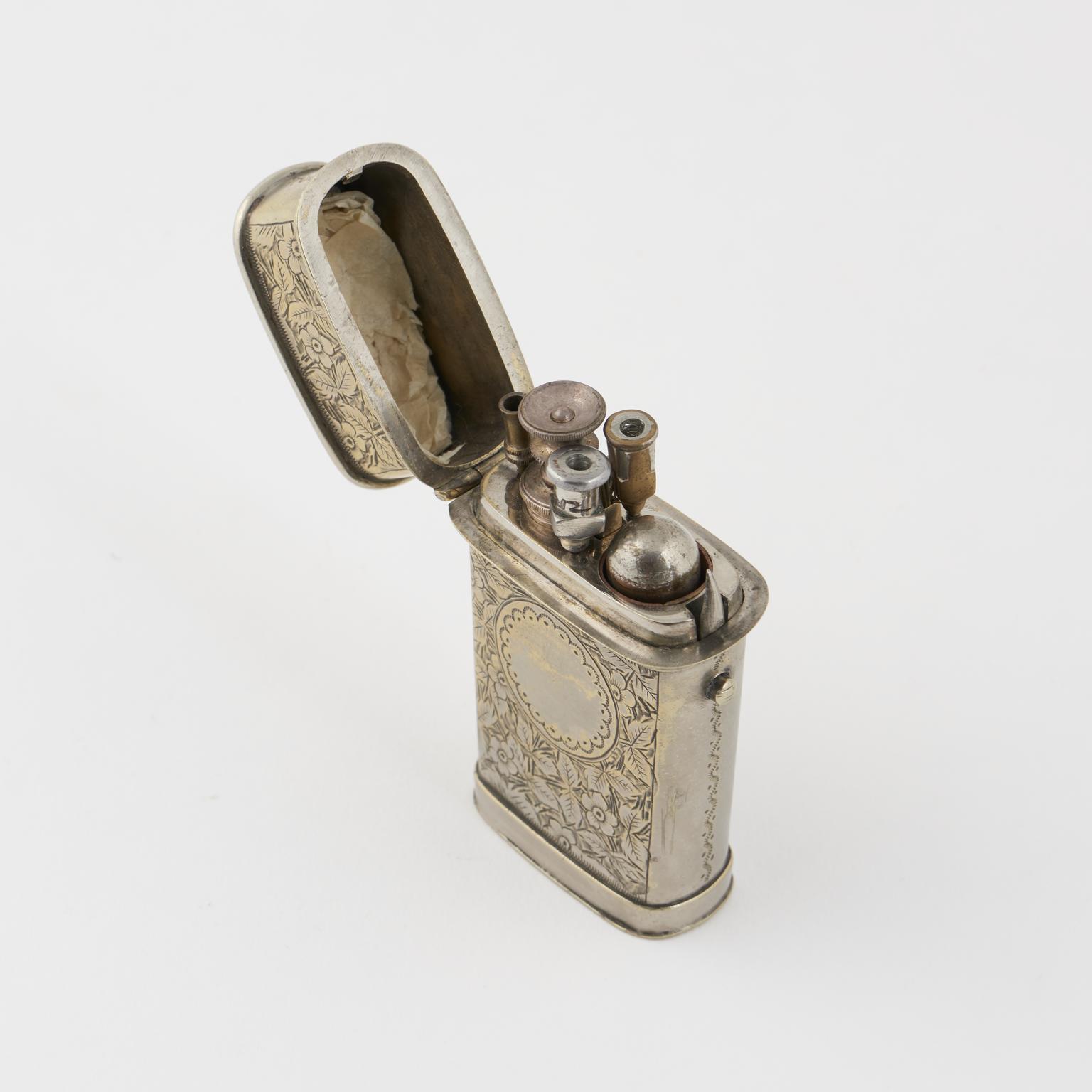
Reference Literature
Feldmann H. History of injections. Pictures from the history of otorhinolaryngology highlighted by exhibits of the German History of Medicine Museum in Ingolstadt. Laryngorhinootologie. 2000 Apr;79(4):239-46. German. doi: 10.1055/s-2000-8797. PMID: 10838689.
Remarks
German silver
German silver, also known as nickel silver, is an alloy composed primarily of copper, nickel, and zinc. Despite its name, German silver does not actually contain any silver. The name comes from its silvery appearance. The typical composition is about 60% copper, 20% nickel, and 20% zinc. This material is known for its hardness, corrosion resistance, and its ability to take a high polish, making it popular for use in making cutlery, musical instruments, and various valuable items in the decorative arts. It was also historically used for making coins and medals.
TAMU
In the name of Texas A&M University, abbreviated as TAMU, where "A. and M." stands for "Agricultural and Mechanical." Originally named the Agricultural and Mechanical College of Texas, the university was established in 1876 as the first public institution of higher education in Texas. Over time, Texas A&M expanded its academic offerings far beyond agriculture and mechanical engineering, becoming a comprehensive university including medical school.
Pravaz syringe
The Pravaz syringe, developed by Charles Pravaz in 1853, was a significant invention in medical history. Here are some key features of the Pravaz syringe:
- Material: The original Pravaz syringes were typically made of glass and metal, which allowed for sterilization and reuse.
- Size: The syringe was relatively small, designed for precise medical procedures, such as injecting localized anesthesia.
- Plunger Mechanism: It featured a screw-driven plunger to precisely control the flow of the injected substance, which was a novel feature at the time of its development.
- Needle: The syringe came with a fine, hollow, and sharp needle, which was revolutionary for its time because it allowed for direct injection into the bloodstream or tissues.
- Sterility and Reusability: Its design facilitated easy cleaning and sterilization, important for reducing infection risks during a time when understanding of germ theory was just beginning to influence medical practices.
- Volume: The syringe typically held a small volume of fluid, suitable for the precise dosages needed in medical injections.
The Pravaz syringe was a groundbreaking tool for its time and paved the way for modern hypodermic syringes, which are crucial in medical treatments and vaccinations.
